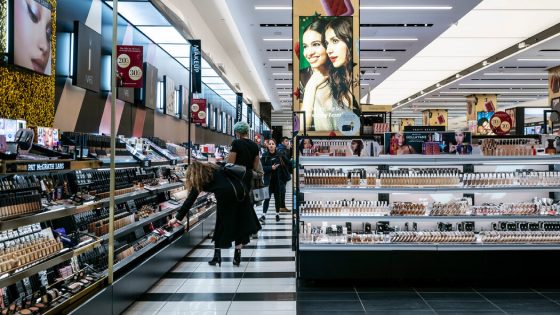Impelled in large part by TikTok to seek beauty products meant for adults, younger customers — teenagers and even preadolescents — are proving to be a mixed blessing for retailers like Sephora and Ulta.
Retail analysts say that as the beauty stores attract a new generation of shoppers, they will need to make sure that the experience remains fulfilling for their older, core customers — including some who may not enjoy stores full of tweens and teens.
“So much of luxury and prestige is the experience,” said Simeon Siegel, a retail analyst at BMO Capital Markets. “Making an adult feel special is very different than making a college student feel special, which is dramatically different than making a tween feel special. Making sure it speaks to all generations is important.”
Teenagers in the United States have said Sephora is their favorite beauty retailer, surpassing Ulta, according to a survey released in October by the investment bank Piper Sandler. The survey found that teenage respondents spent 23 percent more on cosmetics, skin care and fragrance in 2023 than the year before.
Teens and tweens, particularly girls, have always experimented with and spent money on skin care and makeup. But this recent shift from drugstore mascara and blush to the high-end serums and lotions that Sephora carries and are documented on TikTok is leading to younger and younger customers wanting to buy these expensive products once they see that their friends are doing the same.
But some dermatologists are questioning whether all the skin care and makeup products young customers are scooping up at retailers like Sephora are necessary. They say that skin is sensitive at that age, and that too many products can cause irritation. Ingredients like retinol or skin care routines that involve multiple steps may not be suitable for people in their teens, they note.
In recent months, social media has been abuzz with accounts of jubilant, and sometimes rowdy, groups of middle school-aged shoppers buying expensive serums and moisturizers.
While shopping at a Sephora in Las Vegas this year, an eighth grader recounted her skin care routine, which included a pricey cream from Drunk Elephant and a watermelon-scented toner from Glow Recipe containing chemical exfoliants called polyhydroxy acids, or PHAs. The girl said that she did not know what those ingredients did but that the product “smells really nice.” She asked her parents to buy the toner for her after seeing it on social media.
Artemis Patrick, who will take over as chief executive of Sephora North America on April 1, said the interest from younger customers was both an opportunity and a challenge.
“I think that we at Sephora have a huge responsibility to make sure — as do our brands — to make sure that we educate this future consumer on what’s right for them,” she told a group of reporters this week.
Sephora trains its store workers on how to advise shoppers, Ms. Patrick said, adding, “They do their very best to make sure that the new consumer knows this is right for your skin.”
Ulta has also had younger shoppers flood their stores. The company has added displays and educational guidance, which include dermatologist recommendations, in the store and online, it said.
“While we love seeing teens and tweens embrace skin care and establish healthy beauty rituals early on, we want them to engage with the category responsibly and have access to information on the best solutions for their skin care needs,” an Ulta representative said in a statement.
Ms. Patrick takes over Sephora, which is owned by LVMH, as the company is not only experiencing an influx of younger shoppers but also expanding its footprint in suburban areas. Ms. Patrick, 52, is currently president of Sephora’s North American region and has worked at the retailer for 18 years.
Since early in the pandemic, when people increased their spending on makeup and skin care, Sephora has maintained double-digit growth in its e-commerce business, Ms. Patrick said. Traffic in its retail stores has also increased, which she attributed to TikTok and the company’s advertising.
Over the past three years, the beauty retailer has made a push to expand beyond its urban footprint when it partnered with the department-store chain Kohl’s, where it now has small-format shops in about 910 locations.
By next year, Kohl’s said it would have Sephora shops in all of its locations. On Tuesday, the department-store chain said Sephora sales at Kohl’s stores generated more than $1.4 billion in revenue in 2023.
Despite the outsize attention Generation Z is receiving, Ms. Patrick said, younger people’s intrigue with beauty is nothing new: While studying abroad in the early 1990s, she asked a friend to bring her lipsticks from MAC Cosmetics in the United States.
Similarly, she said, her 13-year-old daughter — like many of her peers — is interested in skin care, carrying products like Supergoop sunscreen in her backpack.
“It’s always existed — this sort of youth obsession with your mom or your caretakers’ beauty products,” Ms. Patrick said. “The reality is they know what they know, and they know what they want.”
Madison Malone Kircher contributed reporting.
Source Agencies




